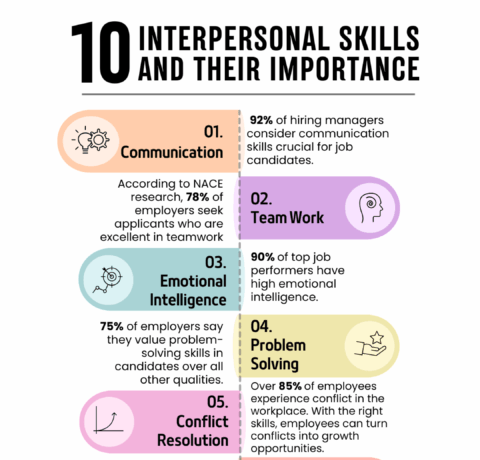Smart Working: 5 Steps to Rethink Work Infographic
This is a simple infographic about the five main steps to plan an effective Smart Working strategy. Smart Working is a management philosophy that draws inspiration on the effective use of smart technologies and of the possibilities that they offer. In today's competitive world, it is important for companies and organisations to stay as updated, as agile and smart as possible. Working hard is not enough: people need to work better and smarter. However, it is easy to say that a company needs to be smart, but what does it mean in practical terms? In this infographic, five main aspects of Smart Working are highlighted: leadership, workplace, technology, estate, and people and culture. In order to implement an effective Smart Working strategy all five aspects need to be considered and rethought according to Smart Working principles.
A smart, flexible leadership allows for a productive work environment and it leads to a healthy office culture, where people are trusted to be able to carry out their work independently and with competence. On the other hand, for this to be possible, a leader needs to be able to give clear goals, strategies and deadlines in order to manage his or her employees on the basis of their work's outcome. A key principle of Smart Working, in fact, is that productivity is evaluated on the basis of outcome and not on the number of hours spent at one's desk. For this reason, mobile, remote and flexible work are important tools for a Smart Working strategy. People need to be able to work when and where it suits them best. In order to do this, it is also important to put good communication practices into place and make sure people are sharing information and working together, even if they are not physically present in one place at the same time. Moreover, giving workers the space and time they need means giving them a concrete possibility to find a balance between work and personal life.
Redesigning office spaces and estate might be the most challenging part, especially for big and/or established organisations. In this case, a substantial investment might be needed for restructuring the office facilities. However, the importance of this step is not to be underestimated. The productivity of employees is in no way related to the size and number of a company's office. Actually, creating hubs where people can actually see each other and work together is an effective way to reorganise and optimise office space. For workers, it should not be so important to have their own desk or their own office where they sit all day every day, but rather it should matter whether they have a comfortable, suitable place to work. There, they would have all the tools of their job available, and they would be able to choose if they want to work, for example, in an open project area or in a quiet work space where they can focus and be alone.
Technology is fundamental in this whole rethinking process. For most organisations, using technological devices has become the norm and they may believe there is not much to rethink there. Getting used to computers, tablets, online platforms and smartphones, however, is not enough. Technology needs to become a core feature of any business that wants to be truly smart. Staying updated on the latest developments, continually training employees, adopting consistent systems for work operations is very important for a smart strategy. Examples of smart uses of technology are: making use of big data to get to know customers and audiences; developing on-demand products and services so that inefficiencies in the encounter between offer and demand are eliminated; using physical-digital integrations to improve a company's product and value propositions.







You can adjust your cookie preferences here.